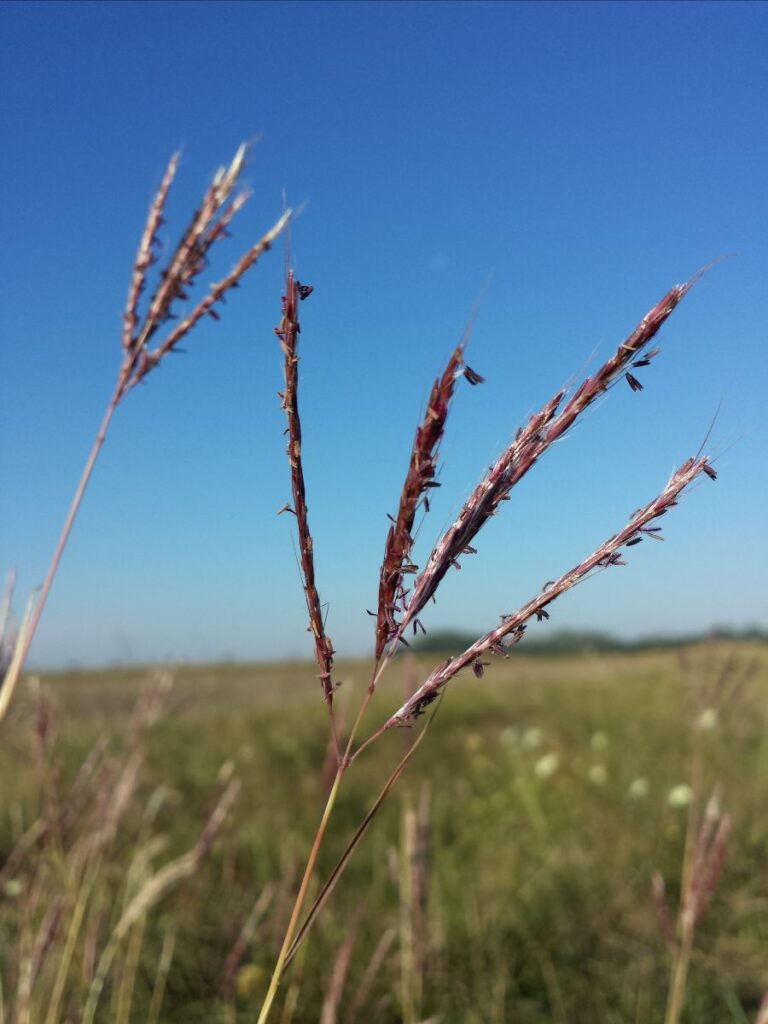
Photo credit: Stefan Lefnaer
https://creativecommons.org/licenses/by-sa/3.0/at/deed.en
A major focus of the Bull Creek Foundation’s work is the removal of invasive tree species from the parklands around Bull Creek. Working with community volunteers, we pull up small trees by hand or lever them out with weed wrenches. For larger trees, we use cutting tools to remove a strip of bark around the circumference of the trunk. While this technique, called girdling, eventually kills the main trunk, it sometimes stimulates the growth of new shoots at the base of the tree. Our three main targets are privet, or Ligustrum, heavenly bamboo, or Nandina, and chinaberry.
We recently learned that another invader was hiding in plain view in meadows near Spicewood Springs Road. Verónica Godoy is spearheading a habitat restoration project in the Stenis Tract. Part of that effort is mapping and removing invasive plants. Verónica found that some clumps of tall grass are in fact an invasive species native to Asia. It is Bothriochloa ischaemum, or yellow bluestem. Another common name, King Ranch bluestem or simply KR bluestem, hints at the history of this imported grass.
The KR bluestem’s American story begins in 1917, when the U.S. consul in Xiamen, China sent samples of the plant to the California Agricultural Experiment Station in Berkeley. From there, in 1924 samples were sent to the Angleton Experiment Station in Brazoria County. Somehow, the new bluestem made its way to south Texas, where in 1939, Nico Diaz with the Soil Conservation Service noticed a field of an unfamiliar grass growing in a King Ranch pasture.
At that point, the grass was studied and found to check all the boxes for cattle ranchers. There were just three main boxes to check: cattle ate it, it was tolerant of drought, and its deep roots helped prevent soil erosion. By the late 1940’s, the import had picked up the King Ranch moniker, and county agricultural agents around the state began distributing tons of KR bluestem seed to ranchers. Today, King Ranch bluestem can be found from coast to coast, mostly in southerly states. It grows throughout much of Texas, concentrated in a broad band extending from the coastal bend to Oklahoma.
Why is the success of KR bluestem a concern, given that there are 21 native varieties of bluestem in Texas? Like other invasive plants and trees, it outcompetes native species and alters the ecosystem, reducing the diversity of species. KR bluestem is associated with the loss of native grasses and wildflowers, and a corresponding loss of insect and bird habitat. In particular, KR bluestem monoculture is blamed for the decline of quail populations. Not only does the KR bluestem disrupt the native ecology, it has introduced a worrisome symbiosis to our region. The red-streaked leafhopper is native to Eastern Europe and Asia. It can carry a bacteria that causes sugarcane white-leaf disease, which is a serious problem in Thailand. Sightings of this leafhopper in Texas correlate with the presence of KR bluestem. Fortunately, although populations of KR bluestem populations and the red-streaked leafhopper live adjacent to sugar cane production areas in Texas and Louisiana, the white-leaf disease has not been observed so far.
There is no easy way to get rid of King Ranch bluestem. Controlled burns, mowing and tilling the soil are sometimes prescribed, but under some circumstances these treatments seem to give KR bluestem a competitive advantage over natives. One school of thought is that the best treatment is to neglect areas where KR bluestem is established and focus on preventing its spread to adjacent areas. Fortunately, at the Stenis Tract we don’t have thousands of acres of KR bluestem pasture to remedy. With volunteer help, we plan to tackle our smallish patches of KR bluestem by pulling the plants up and seeding with native alternatives.
For further reading:
Introduced Bluestem Grasses: Management on Native Lands
https://cdn-ext.agnet.tamu.edu/wp-content/uploads/2019/06/ERM-036_-Introduced-Bluestem-Grasses-Management-on-Native-Lands.pdf
